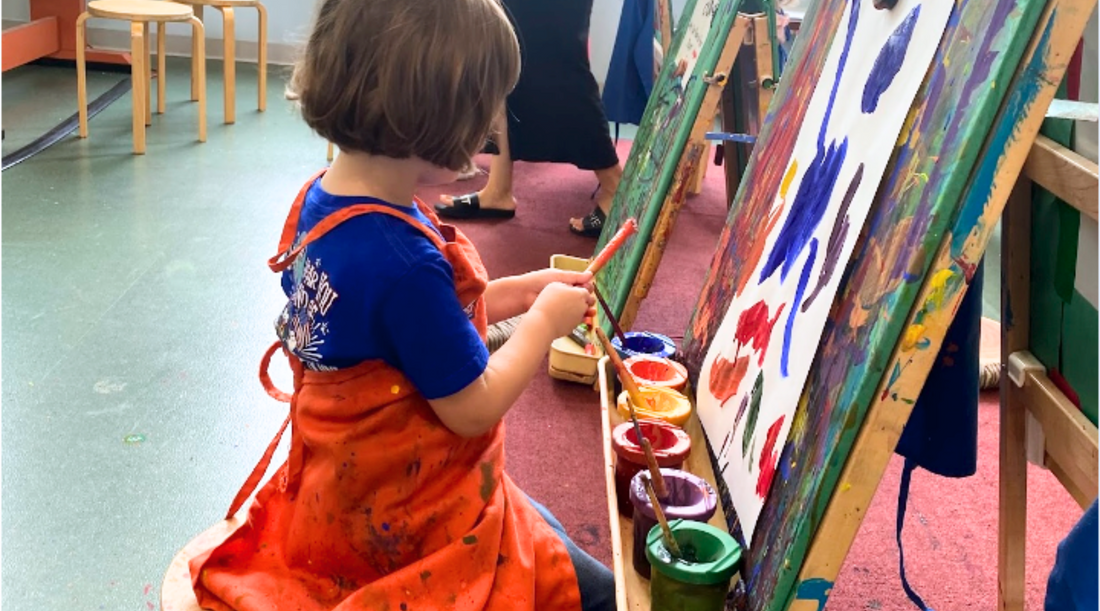Unlocking the Power of Handwriting: Integrating Writing Skills Into Early Literacy Instruction

In a world dominated by keyboards and touchscreens, handwriting might seem like a relic of the past. In the United States, the struggle with literacy is widespread. The decline in handwriting instruction only adds to the challenge, leaving many children needing more intervention for fundamental skills. Let's explore the importance of handwriting and discover practical methods to make learning handwriting enjoyable.
Do we still need to teach handwriting?
Despite the technological advancements in most classrooms in the last few years, handwriting remains an essential skill for learning to read. Research shows that handwriting instruction significantly contributes to literacy development, strengthening letter recognition and reading proficiency (Graham, 2010). Brain imaging shows heightened activation in regions associated with skilled reading among individuals who learn to write by hand (Longcamp et al., 2008). This research highlights the importance of approaching handwriting instruction systematically and progressively in any educational setting.
How does handwriting help the brain learn?

Handwriting is not just about putting pen to paper—it is a brain workout! Research shows that when we write by hand, we activate different parts of the brain, making it easier to tell letters apart and read fluently (Gimenez et al., 2014). Teaching handwriting in a structured way helps our brains get even better at recognizing and telling letters apart. When we master this skill, reading becomes a breeze! By physically shaping letters, kids build a solid understanding of how letters and sounds fit together (Graham, 2010). It is like laying the groundwork for literacy, stroke by stroke.
Handwriting plays a key role in how our brains understand letters, especially in the letterbox region. When we learn to read, activating this area helps our brain tell letters apart and stops us from writing them backward. For example, being able to spot the difference between "b" and "d" or "p" and "q" takes strong letter discrimination skills. Studies have found that people who learn to write by hand are better at recognizing letters and less likely to mix up letters that look similar (James & Engelhardt, 2012). This all leads to more fluent reading and a better understanding of what we read. So, by doing handwriting activities, learners get a better grasp of how letters are formed, which sets them up for success in learning to read.
The Write Way: Gross-Motor Activities
To build strong handwriting skills, it is important to start by strengthening gross-motor skills.
Activities like drawing large shapes or handwriting strokes on vertical surfaces such as chalkboards or whiteboards promote whole-arm movements and spatial awareness. Fun art projects using finger painting or large paintbrushes on easels spark creativity and strengthen hand and arm muscles, improving handwriting endurance and control. Even games that require hand-eye coordination, such as crawling, climbing, or playing with large balls, can build coordination and motor skills.
Crafting Clarity With Fine-Motor Skills

Fine-tuning handwriting abilities relies heavily on the strengthening of fine-motor skills. Learners can strengthen hand muscles and build dexterity by using tweezers to pick up small objects, threading beads onto strings or building with small blocks. Arts and crafts projects that involve cutting with scissors, folding paper or drawing shapes can build fine-motor control and precision. These activities add an element of fun to strengthening fine-motor skills and helping students develop the key skills needed for writing.
Writing With Rhythm
Rhythmic handwriting instruction offers a structured approach to teaching students how to write. Early writers often begin their pencil strokes at the baseline naturally. Providing clear directions on where to position their pencil to begin each letter is important for effective and structured instruction, reducing potential confusion among students beginning to learn to write. This method helps students remember where to start each letter and promotes muscle memory, making writing more automatic with practice. Regular handwriting practice sessions, focusing on strokes and letter formation, will help students develop fluency and confidence in their writing. By incorporating explicit and systematic instruction, learners can develop fluent and legible handwriting, clearing the way for writing and reading success.
Let’s Work Together

Handwriting is more than a mode of communication; it is a cognitive exercise that shapes young brains. As we explore the world of handwriting and how it influences brain development, it is clear that building strong handwriting skills is so important. Parents and educators can help by including motor-skill activities in daily routines. Through playful activities like finger painting, practicing handwriting strokes or crafting letters with playdough, we can provide children with opportunities to strengthen their fine-motor skills and letter recognition abilities.
So, let us take action together. Let us make handwriting instruction a fundamental part of our educational practices and home environments. We can empower our children to become confident writers, setting them on a path to success. Together, we can shape a brighter future for our young learners—one letter at a time.
To learn more about teaching handwriting, check out our website for additional resources: https://resources.logicofenglish.com/#handwriting
Citations
Gimenez, P., Bugescu, N., Black, J. M., Hancock, R., Pugh, K., Nagamine, M., Kutner, E., Mazaika, P., Hendren, R., McCandliss, B. D., & Hoeft, F. (2014). Neuroimaging correlates of handwriting quality as children learn to read and write. Frontiers in Human Neuroscience, 8, 155. https://doi.org/10.3389/fnhum.2014.00155
Graham, S. (2010). Want to Improve Children’s Writing? Don’t Neglect Their Handwriting. American Educator, 4(33), 20–40.
James, K. H., & Engelhardt, L. (2012). The effects of handwriting experience on functional brain development in pre-literate children. Trends in Neuroscience and Education, 1(1), 32–42. https://doi.org/10.1016/j.tine.2012.08.001
Longcamp, M., Boucard, C., Gilhodes, J.-C., Anton, J.-L., Roth, M., Nazarian, B., & Velay, J.-L. (2008). Learning through Hand- or Typewriting Influences Visual Recognition of New Graphic Shapes: Behavioral and Functional Imaging Evidence. Journal of Cognitive Neuroscience, 20(5), 802–815. https://doi.org/10.1162/jocn.2008.20504

